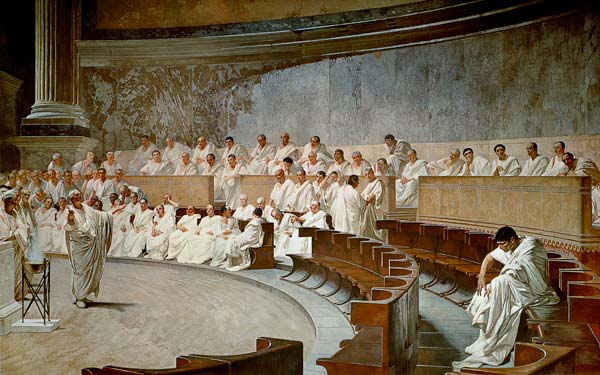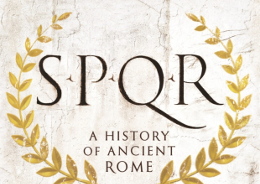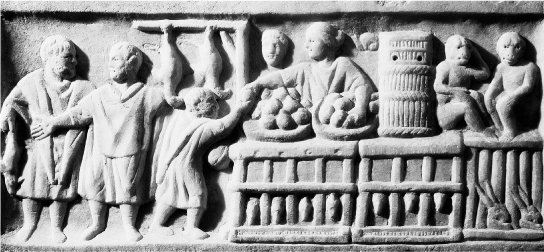Below is a very idealised picture of The Roman Senate in 63 BC, as depicted by Cesare Maccari in 1889 (painted for the new Italian senate itself) :

It's a famous picture and Mary Beard's new book SPQR (a link to The Economist review) begins with a description of one of the big crises of the later Roman Republic, the Catiline Conspiracy. In the painting, Marcus Tullius Cicero holds the floor denouncing fellow senator Lucius Sergius Catilina, the isolated figure in the bottom right. Catiline would soon realise that he was finished in Rome and his uprising (if that was what he planned) was stillborn; he would slip out of the city to die in battle at the head of his supporters. This episode was very famous in its day, and endlessly discussed (not least by Cicero himself) and Mary Beard uses it right at the start of her book to introduce some of the main elements of her history of Rome. The first century BC was tumultuous for the city.

The recent BBC TV series Ultimate Rome is a companion to the book, and whereas the television is good, the book is excellent. Both tell the same story of the rise of the city and the background of its people, politics and culture. As one would expect, the book has a lot more detail and much greater depth. A greater depth but remaining very readable with lots of interesting and sometimes amusing anecdotes. One of those books that absorb and fly by so quickly because of their quality.
One of Beard's strengths, apart from having a very deep knowledge of her history, is the fact she can find and include so many small, often more personal, artifacts from the lives of roman citizens. These are sometimes grave inscriptions, perhaps a small message about a beloved son or daughter, or sometimes business signs. Even "pub" paintings.

Above : A marble relief showing a poultry seller's stall from Ostia, perhaps from a tomb or perhaps a shop sign.
The man second from the left seems to be drumming up trade, and behind the counter a woman is serving customers. The stall is
constructed from cages (containing a couple of rabbits), on which a pair of monkeys sit.
Source.
Solitudinem Faciunt, Pacem Appellant
The famous phrase from Tacitus : They create desolation and call it peace.
In fact, the people the Romans conquered were often quite happy to collaborate in their subjection to Rome, many in the ruling or upper echelons being long used to the privileges and luxuries that came with civilisation. The "barbarians" wanted the "good life" as much as anyone. For most people (the vast majority were rural) life went on as usual. Beard has some more to say about native resistance in her blog A Don's Life.
Tacitus puts some fine words into the speeches of the far-flung "barbarian" rulers who all lost out, and usually lost their lives, to Roman arms. Fine words, but there was no way Tacitus knew what was said. As Beard points out though :
While we must regret not reading the authentic views of the provincial dissidents of the empire, the idea that Roman writers could imagine what it was like to be in opposition to their own imperial power is perhaps even more important, and it is a distinguishing feature of Roman culture and power.
Professor Beard closes with the year 212 AD and the Emperor Caracalla giving all freeborn inhabitants of the Roman Empire citizenship. People have argued about the reasons he did this for a long time, one common suggestion being that it massively expanded the tax base. At the end of the book, she tells us that she is not the person to finish the history, and write the story of the end of the Empire in the West, or its continuation in the East. A shame because it's a wonderful book and a second volume would be very welcome.



